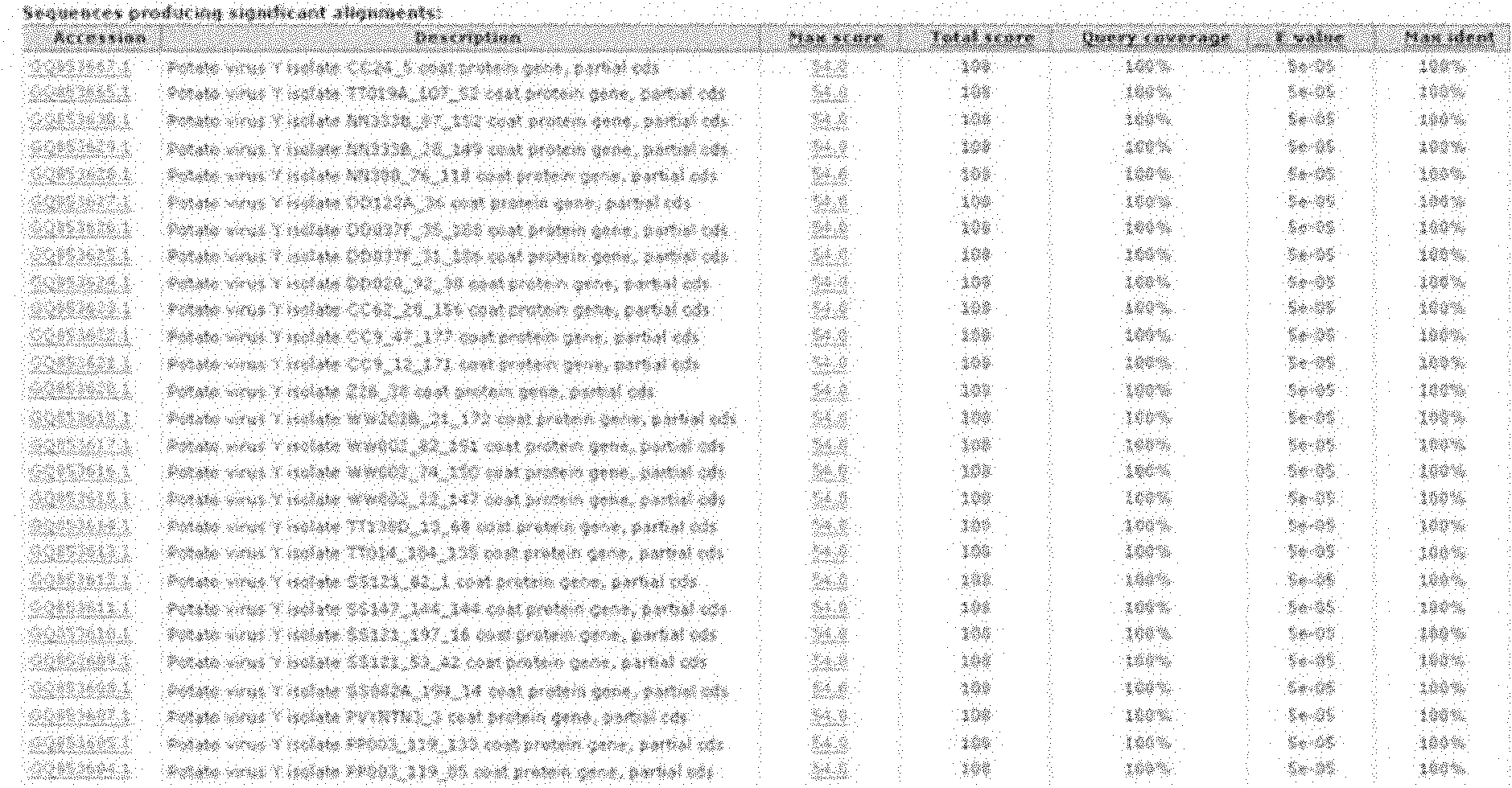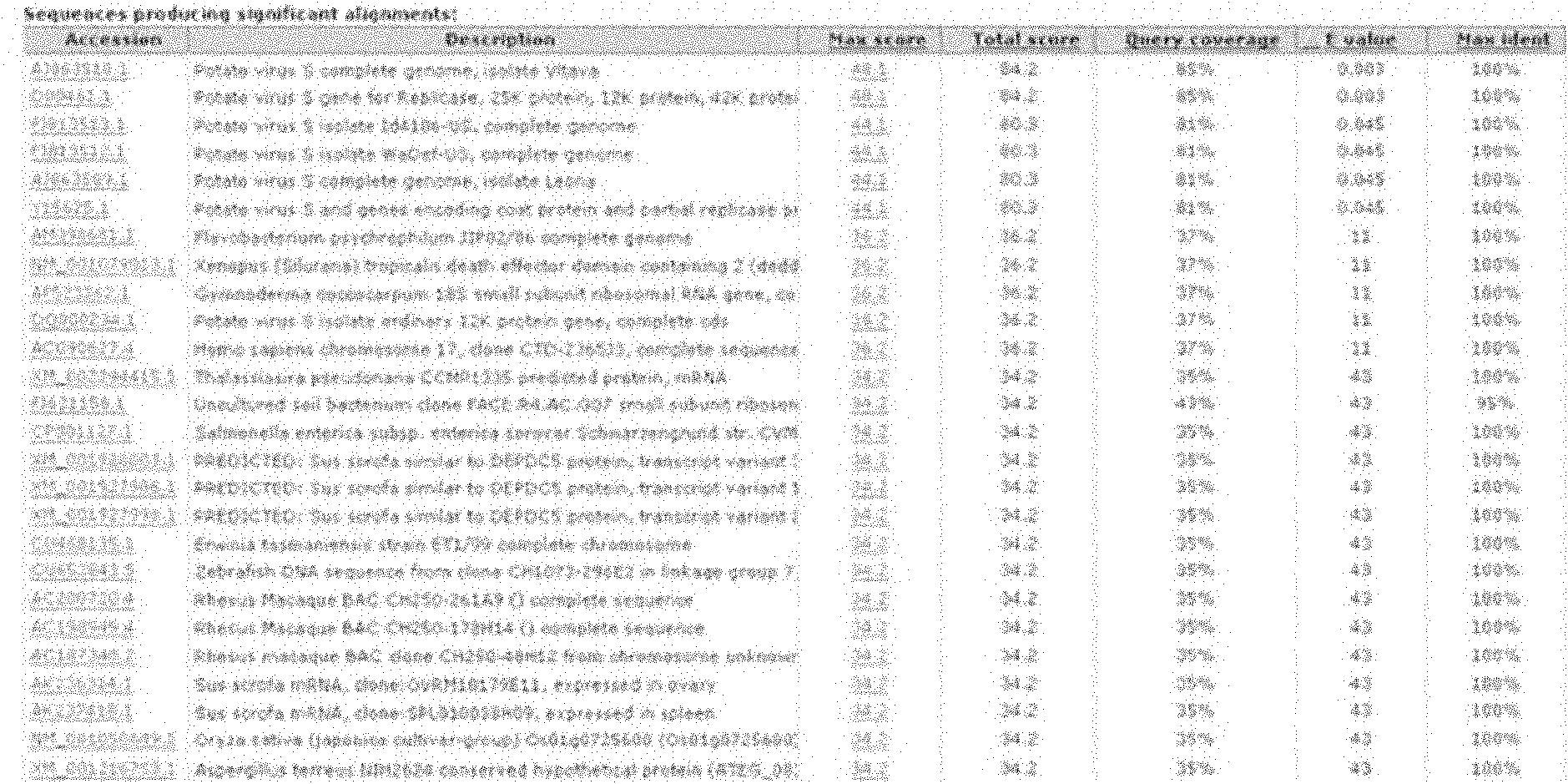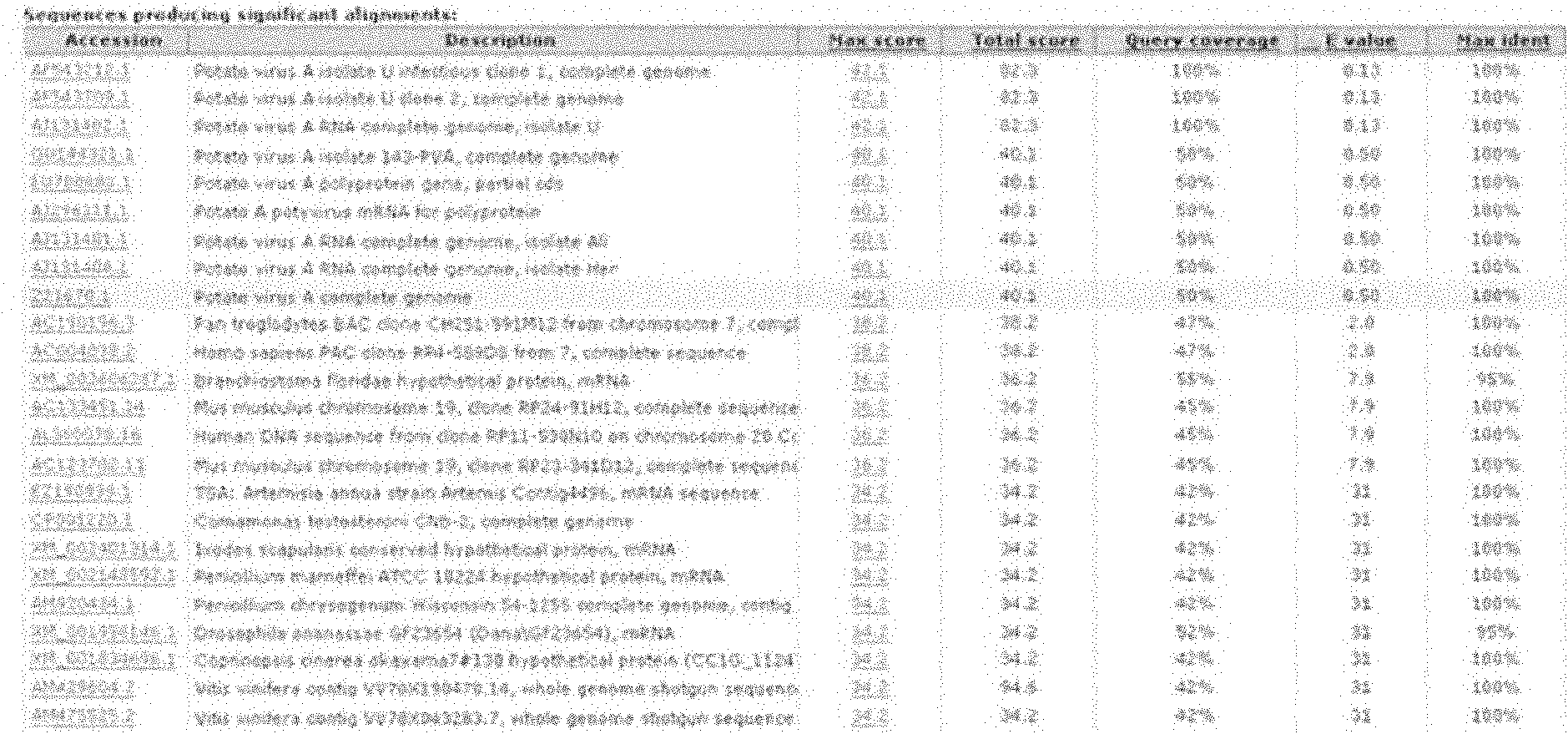Special primer capable of detecting different strains of potato viruses and design method thereof
A potato virus and detection method technology, which is applied in biochemical equipment and methods, microbial measurement/inspection, DNA/RNA fragments, etc., can solve the problems of affecting detection results and low specificity of primers, and achieve good repeatability and sample The effect of simple preprocessing and easy operation
- Summary
- Abstract
- Description
- Claims
- Application Information
AI Technical Summary
Problems solved by technology
Method used
Image
Examples
Embodiment 1
[0063] Design of special primers.
[0064] Take PVM as an example:
[0065] 1. Retrieve all reported, discovered and submitted PVM sequences through NCBI's GENBANK database (http: / / www.ncbi.nlm.nih.gov / );
[0066] 2. After downloading as many PVM sequences as possible, use DNAMAN software for comparative analysis to screen out the PVM virus sequences of different strains;
[0067] 3. Compare the PVM virus sequences of different strains by DNAMAN software, and find their conserved regions (that is, all strains are exactly the same, and there is no variation in a DNA sequence);
[0068] 4. Then use PRIMER5, OLIGO and other primer design software to design screening primers in the conserved region;
[0069] 5. Submit the designed alternative primers to NCBI's BLAST system for electronic PCR screening (http: / / www.ncbi.nlm.nih.gov / tools / primer-blast / index.cgi?LINK_LOC=BlastHome) , select the primers whose similarity is 100% and can search out the most different strains of PVM vi...
Embodiment 2
[0075] Single-plex RT-PCR standardized detection method.
[0076] The RT-PCR detection step is an existing conventional step, and the following are related detection conditions.
[0077] 1. Reverse transcription reaction: In a 20 μl system, 2.5 μl of RNA, 0.5 mM of dNTP, 5 U of RNA inhibitor, 0.5 μl of downstream primer, and 50 U of MMLV reverse transcriptase.
[0078] The RT reaction conditions are: 42°C for 50 minutes, 94°C for 5 minutes, 4°C, and store.
[0079] 2. PCR reaction: in 25μ system, cDNA 4μl, dNTP 0.2mM, Mg 2+ 1.5mM, 0.4μM each for upstream and downstream primers, 1U Taq enzyme.
[0080] The PCR reaction conditions were: pre-denaturation at 94°C for 3 min, denaturation at 94°C for 30 s; annealing at 59°C for 30 s, extension at 72°C for 30 s, a total of 30 cycles; final extension at 72°C for 10 min, and storage at 4°C.
Embodiment 3
[0082] Double RT-PCR standardized detection method.
[0083] The RT-PCR detection step is an existing conventional step, and the following are related detection conditions.
[0084] 1. Reverse transcription reaction: In 20μl system, RNA 2.5μl, 10mM dNTPs 2μl, RNA inhibitor 10U, 5×MMLV buffer 4μl, 20pM viral downstream primers 0.5μl, MMLV reverse transcriptase 100U.
[0085] The RT reaction conditions are: 42°C for 30 minutes, 94°C for 5 minutes, 4°C, and store.
[0086] 2. PCR reaction: in 25μl system, cDNA 4μl, 10mM dNTP 0.5μl, 10×PCR buffer 2.5μl, 25mM Mgcl 2 2 μl, 1 μl each of 20pM virus upstream and downstream primers, 1.5U Taq DNA polymerase.
[0087] The PCR reaction conditions were: pre-denaturation at 94°C for 3 min, denaturation at 94°C for 30 s; annealing at 59°C for 30 s, extension at 72°C for 1 min, 30 cycles; final extension at 72°C for 10 min, storage at 4°C.
PUM
 Login to View More
Login to View More Abstract
Description
Claims
Application Information
 Login to View More
Login to View More - R&D
- Intellectual Property
- Life Sciences
- Materials
- Tech Scout
- Unparalleled Data Quality
- Higher Quality Content
- 60% Fewer Hallucinations
Browse by: Latest US Patents, China's latest patents, Technical Efficacy Thesaurus, Application Domain, Technology Topic, Popular Technical Reports.
© 2025 PatSnap. All rights reserved.Legal|Privacy policy|Modern Slavery Act Transparency Statement|Sitemap|About US| Contact US: help@patsnap.com



